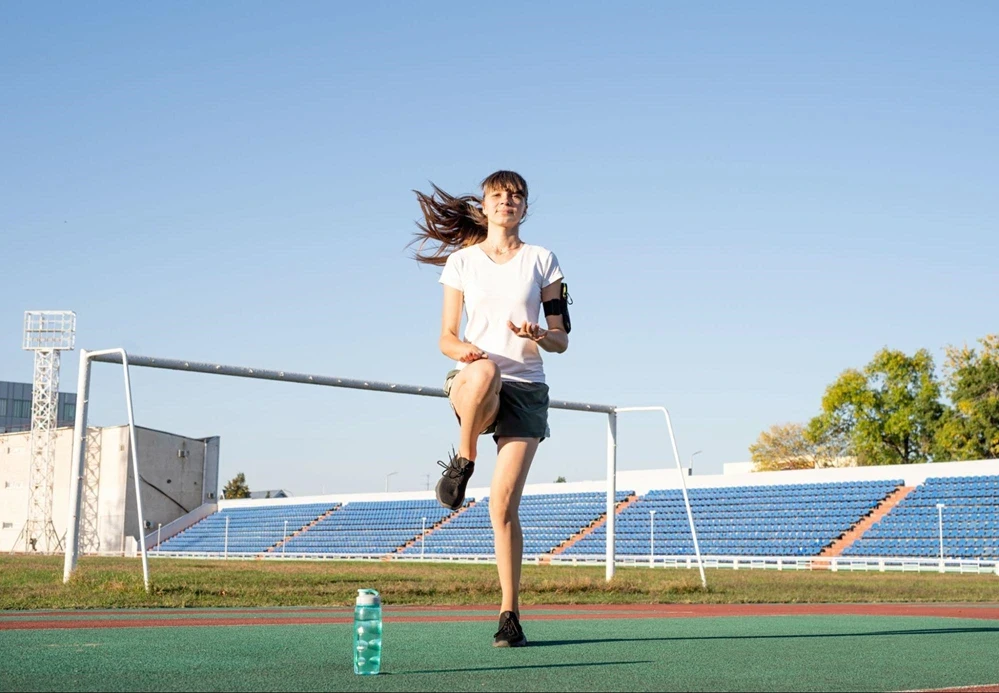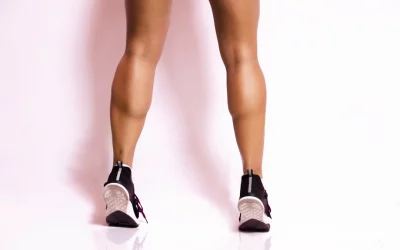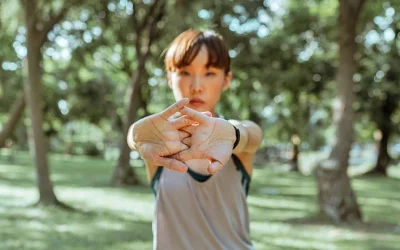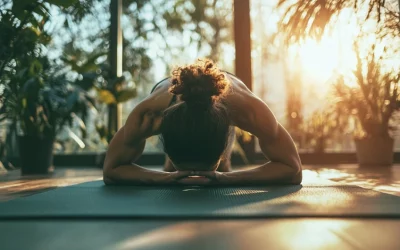Ballistic stretching is all about energy and momentum. It’s a high-intensity technique that uses quick, bouncing motions to push your muscles to their limits. Think of basketball players doing leg swings or runners prepping with dynamic arm flings—these are all about simulating the moves you’ll use in action.
But here’s the thing: ballistic stretching isn’t your everyday stretch. Unlike the slow and steady hold of static stretching or the controlled movements of dynamic stretching, this style is fast-paced and demands precision. Done right, it can boost flexibility, power, and readiness for high-impact sports. Done wrong? It could lead to strain or injury.
In this article, we’ll explore the ins and outs of ballistic stretching—what it is, how it works, when to use it, and, most importantly, how to stay safe. Whether you’re an athlete looking for an edge or just curious about this bold technique, we’ve got you covered.
What is Ballistic Stretching?
Ballistic stretching is a high-energy technique that uses rapid, bouncing movements to push muscles past their usual range of motion. Unlike more controlled methods, it relies on momentum to stretch muscles and is often used in sports to prepare for explosive actions like jumping or sprinting.
This dynamic approach can improve flexibility and muscle elasticity, making it a popular choice for athletes in high-intensity sports. However, its aggressive nature can increase the risk of strain, which is why it’s best suited for advanced fitness routines or under professional guidance.
“I tried ballistic stretching before my basketball games, and it gave my movements a whole new level of freedom—like my body was primed for action!”
Effective Ballistic Stretching Techniques
 Arm Swings
Arm Swings
Arm Swings are a dynamic movement that energizes the upper body, preparing the shoulders and chest for a wide range of motion. This stretch is ideal for loosening tight muscles and enhancing flexibility in the shoulders, making it a go-to warm-up for upper-body exercises.
This stretch is especially beneficial as it helps:
-
Prepare the shoulders for activities involving overhead movements like throwing or lifting.
-
Improve flexibility in the chest and upper back, supporting better posture and range of motion.
-
Activate the upper body muscles, preparing them for dynamic sports or workouts.
To perform Arm Swings, follow these steps:
-
Stand tall with your feet shoulder-width apart, maintaining good posture.
-
Extend both arms straight out to your sides, parallel to the floor.
-
Swing your arms forward in a circular motion, starting slow and gradually increasing speed and range.
-
After 15–30 seconds, reverse the motion, swinging your arms backward.
-
Keep your movements controlled to avoid overextension or strain.
Leg Swings
Leg Swings are a versatile ballistic stretch designed to activate the hips, hamstrings, and glutes. This dynamic motion is perfect for preparing the lower body for high-impact activities like running, jumping, or cycling.
This stretch is especially beneficial as it helps:
-
Increase hip mobility, allowing for smoother and longer strides during activities.
-
Loosen the hamstrings, reducing the risk of strain during explosive movements.
-
Engage the lower body muscles, improving readiness for athletic performance.
To perform Leg Swings, follow these steps:
-
Stand near a wall or sturdy object for support and balance.
-
Shift your weight onto one leg and swing the opposite leg forward and backward in a controlled manner.
-
Begin with small swings and gradually increase the height as your muscles warm up.
-
Perform 10–15 swings on one leg for up to 30 seconds, then switch to the other leg.
-
Focus on maintaining balance and control throughout the movement.
Torso Twists with Bounce
Torso Twists with Bounce add a dynamic twist to traditional core warm-ups, targeting the obliques and spine to enhance rotational flexibility. This stretch is great for loosening up the torso and preparing for activities that involve twisting motions.
This stretch is especially beneficial as it helps:
-
Prepare the core and spine for rotational movements like throwing or swinging.
-
Improve flexibility in the obliques and lower back, reducing stiffness.
-
Promote smoother and more efficient body twists during sports or workouts.
To perform Torso Twists with Bounce, follow these steps:
-
Stand with your feet shoulder-width apart for stability.
-
Extend your arms out to the sides, keeping them parallel to the ground.
-
Rotate your torso to one side as far as is comfortable, adding a gentle bounce at the end of the twist.
-
Return to the center and repeat on the other side, alternating twists for up to 30 seconds.
-
Keep your movements fluid and controlled to prevent over-twisting.
Standing Side Bends with Bounce
Standing Side Bends with Bounce target the obliques, lats, and intercostal muscles, offering an effective way to prepare the torso for lateral movements. This dynamic stretch is particularly useful for sports requiring side-to-side motions.
This stretch is especially beneficial as it helps:
-
Stretch the side body, improving mobility for lateral movements.
-
Release tension in the lats and ribcage, promoting better breathing.
-
Prepare the torso for sports or activities involving side-to-side motions like tennis or swimming.
To perform Standing Side Bends with Bounce, follow these steps:
-
Stand upright with your feet shoulder-width apart, maintaining good posture.
-
Raise one arm overhead and lean sideways toward the opposite side.
-
Add a gentle bounce at the end of the bend to deepen the stretch.
-
Return to the starting position and switch sides, repeating for up to 30 seconds per side.
-
Keep your movements controlled to avoid straining your back or shoulders.
High Knees with Bounce
High Knees with Bounce combine ballistic stretching with cardio, targeting the hip flexors, quadriceps, and calves. This dynamic exercise is perfect for warming up the lower body while boosting overall energy.
This stretch is especially beneficial as it helps:
-
Activate the hip flexors and quads for explosive movements like sprinting or jumping.
-
Improve flexibility and endurance in the lower body muscles.
-
Enhance cardiovascular readiness, making it a great addition to pre-workout routines.
To perform High Knees with Bounce, follow these steps:
-
Stand upright with your feet hip-width apart, keeping your core engaged.
-
Lift one knee toward your chest as high as possible, adding a light bounce at the top of the motion.
-
Alternate legs in a jogging motion, gradually increasing speed and intensity.
-
Continue for up to 30 seconds, focusing on maintaining proper form and rhythm.
-
Keep your movements light and springy to avoid overloading your joints.
Incorporating these ballistic stretches into your daily routine can help improve flexibility, warm up your muscles, and boost athletic performance. For a more personalized approach, explore WeStretch for expert guidance. With tailored routines from virtual coaches Ada and Bruce, you’ll get the most out of your stretching sessions, safely and effectively.
Making Ballistic Stretching Part of Your Training Plan
Adding ballistic stretching to your fitness routine is a great way to boost flexibility, prep for intense movements, and enhance performance. The trick? Use it wisely. Start your warm-up with dynamic moves like Arm Swings or Leg Swings to get your blood flowing and muscles ready for action.
For balance, pair ballistic stretches with dynamic or static techniques like lunges or simple holds to activate and recover your muscles. Go slow at first—keep the movements controlled and gradually increase intensity as you get comfortable. Just 10–15 minutes before a workout can make all the difference.
Need help creating a routine? Check out WeStretch! Our virtual coaches Ada and Bruce can guide you through customized plans to safely incorporate ballistic stretching into your training. Flexibility and performance, here you come!
Exercise Smarter with WeStretch: Your All-in-One Stretching Assistant
A consistent full-body stretching routine is essential for improving flexibility, supporting injury prevention, and enhancing overall well-being. Carefully following simple yet effective stretches targeting the hamstrings, hip flexors, back, quads, chest, and shoulders, individuals of any fitness level can reap the benefits.
Regular stretching, with attention to proper form and consistency, can help you move more freely, recover faster, and feel better in everyday activities.
Looking for a way to add some fun to your stretching routine? Check out WeStretch—an app that’s like your own personal stretch coach! With tailored plans, easy-to-follow demos, and progress tracking, it’s got everything you need to keep you limber and on point. Ready to get flexible? Sign up today and let’s get stretching!
FAQ
What is ballistic stretching?
Ballistic stretching uses rapid, bouncing motions to push muscles beyond their normal range of motion. Often used by athletes, it aims to improve flexibility and prepare the body for explosive activities. Unlike static stretching, it involves quick, repetitive movements rather than holding a position.
Is ballistic stretching suitable for beginners?
Ballistic stretching is generally not recommended for beginners due to the higher risk of strain or injury. Its intense nature requires proper technique and control, making it better suited for experienced athletes or those under professional guidance.
What are the benefits of ballistic stretching?
Ballistic stretching enhances muscle elasticity, improves flexibility, and prepares the body for dynamic, high-intensity movements. It’s especially beneficial for sports requiring explosive power, like basketball, gymnastics, or sprinting, helping athletes achieve optimal performance.
How does ballistic stretching differ from dynamic stretching?
While both involve movement, ballistic stretching uses quick, bouncing actions to push the muscle’s range, while dynamic stretching incorporates controlled, flowing movements. Ballistic stretching is more intense and better for advanced users, while dynamic stretching is safer for warming up and all fitness levels.
Can ballistic stretching help with rehabilitation?
Ballistic stretching may play a role in rehabilitation under professional supervision, targeting muscle-tendon properties and flexibility. However, its high intensity can be risky for injured muscles, so it’s typically used sparingly and only in specific recovery scenarios.






